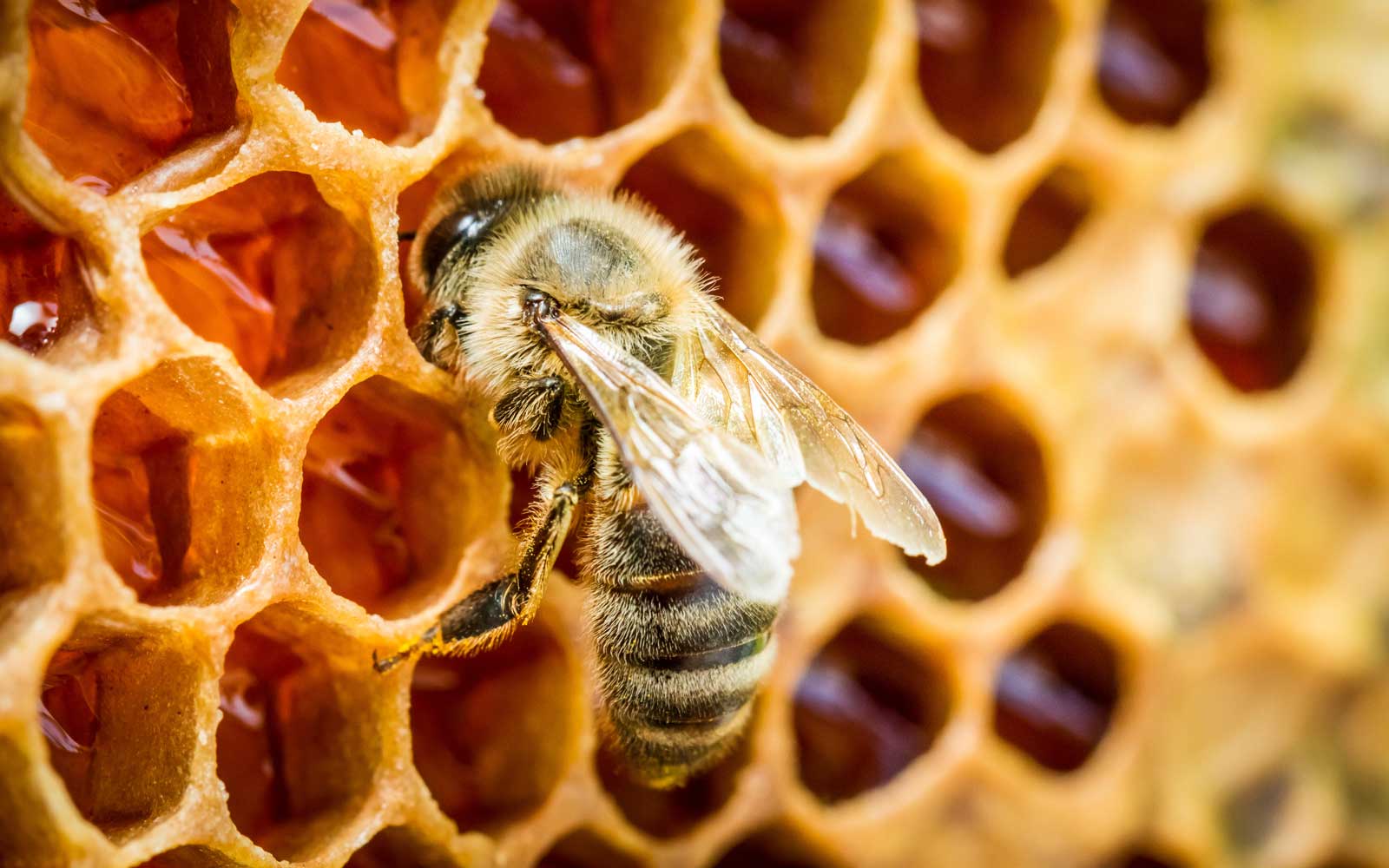How Do Bees Make Honey?

Honey has been consumed by humans for thousands of years in food, cosmetics and medicines, but so many of us don’t understand where it comes from. Does it appear magically in hives? Is it excrement? Is it food?
Bee Clean Soaps want to dispel the myth of honey production by explaining exactly how and why honeybees make honey, and what we can do to ensure we are collecting it ethically.
What is honey?
Honey is a very special liquid food that is only made by social bee colonies. It is usually sticky and sweet, and high in carbohydrates.
Honey is made from nectar, a sweet liquid that is produced by flowers as a means of attracting pollinators. Nectar is made up of the sugars fructose, glucose, and sucrose.
Why do bees make honey?
Bees make honey to eat. It is their main source of energy.
While worker honeybees consume pollen as their main source of protein and nutrients, honey provides them with carbohydrates and is therefore vital for their nutrition.
Over the spring and summer months, forager bees will dedicate their time to making honey. It is important for them to build up a sufficient store to survive the winter months when their sister winter bees will be overwintering in the hive.
Bees need carbohydrates in their winter diet to keep them warm. If there is not enough honey in the hive, honeybees can starve and perish.
Who makes honey?
Honey is made by social bee colonies. As the name suggests, honeybees make far more honey than other social bee colonies.
In a honeybee colony, the task of making honey is divided amongst female worker bees.
Each worker bee has an assigned role. Some bees remain in the hive and tend to the larvae, other bees stay by the side of their queen and make sure that she is fed and cleaned.
There are also scouts, foragers and receivers. Scouts leave the hive in search of good nectar sources. Once they have found a hefty supply, they return to the hive and alert the foragers, whose job it is to collect this nectar, as well as pollen, and return it to the hive. The receivers then continue the process of depositing the honey.
Did you know that honeybees collect pollen on their hind legs in shiny balls known as pollen baskets?
How do bees make honey?

In the spring and summer months, forager honeybees leave the hive to search for nectar which they suck up through their long, hollow tongue and store in a second stomach known as a crop.
Although it is referred to as a “second stomach”, the crop doesn’t actually act as a stomach. Instead, it is a pocket filled with digestive enzymes that break down the sugars in nectar to reduce its water content.
Once the foragers have filled their crop with nectar, they will return to the hive and regurgitate it from their stomach into another bee’s mouth, who will then digest the liquid further and regurgitate it into a different bee’s mouth. This chain continues until the honey is thick enough to be deposited into a honeycomb cell.
The next job of the honeybees is to gather over the cell and fan their wings rapidly to evaporate the remaining water. If the honey is too wet, it can grow bacteria and mould, so it is vital that it has very little moisture to avoid it spoiling.
The now full honeycomb cell will be sealed by a layer of wax, ready to be broken into over the winter months.
Do all honeybees eat honey?
Worker bees are the main consumers of honey within most social bee colonies, but the queen has more of a taste for a substance called royal jelly. This makes up the majority of her diet as the protein levels help to keep her ovaries healthy.
Royal jelly is secreted from the hypopharyngeal glands of nurse bees and is also used to feed bee larvae when they are newly hatched. Soon after, their diet will be switched to watered down honey. Only larvae who have been selected to grow into queens will be allowed the luxury of feasting on royal jelly until adulthood.
Does human use of honey harm bees?
No. As long as the honey is being extracted with care and in reasonable quantities by a knowledgeable beekeeper, it doesn’t cause any harm to bees.
Honeybees have a tendency to make far more honey than is required for their diet. This means that beekeepers are able to take small amounts from the hive without disturbing the livelihood of their colonies.
Bee Clean Soaps are committed to only using locally sourced honey in our natural honey soaps, shaving soaps and lotion bars, so that we know exactly where our honey is coming from and how it is being produced. To further our commitment to saving the bees, we donate a percentage of our profits to the Bumblebee Conservation Trust.
